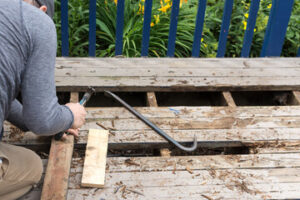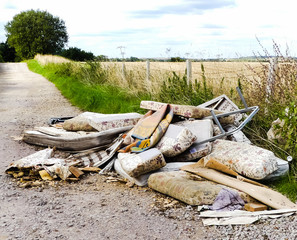A well-maintained landscape increases the beauty of your business and sends a positive message to customers, clients and employees. It also communicates that you are a professional company with high standards of work and environmental stewardship.

When choosing a commercial landscaping service, look for one with experience working on large-scale projects and that is familiar with the unique challenges of each type of property. They should also have insurance and provide client testimonials. Contact Greensboro Commercial Landscaping Services for professional help.
1. Increased Property Value
People are more likely to visit a business in a nice looking outdoor space, and a well-designed commercial landscape increases the property value. This is especially true if it is professionally maintained. Numerous studies have shown that property values increase by up to 12% for commercial spaces that invest in professional landscaping. It makes the area look more appealing and creates a welcoming, professional atmosphere for customers or tenants.
In addition, the plants and shrubs in the commercial landscape help to keep the air clean by absorbing carbon dioxide and releasing oxygen. The result is a cleaner environment that helps reduce stress levels for employees and customers. This leads to increased productivity and a more positive workplace environment. Many companies have a tree or plants named after employees to commemorate their contributions. They also have a dedicated garden where employees can tend to flowers, vegetables, or fruit trees and build bonds with co-workers in a relaxing setting.
The commercial landscape is the first thing that people see, so it sets their initial perception of the company. When a company is unkempt, it conveys the message that the company doesn’t care about its image or reputation. On the other hand, a well-groomed landscape shows that the company cares about its image and is willing to make a financial investment in order to maintain it.
The landscaping may even reduce utility costs for the company. For example, strategically placed bushes and hedges can provide natural insulation that will reduce heating and cooling expenses over time. These benefits may be enough to convince potential tenants to sign a lease and invest in the property. In turn, the company will reap the rewards of its investment by retaining occupants and reducing turnover.
2. Attracts Customers
Your business’s landscape is the first thing customers or tenants see. The cliche “don’t judge a book by its cover” doesn’t hold up for the outdoors, especially when it comes to commercial landscaping. The right commercial landscaping services can help make your business look more professional and reputable. It shows that you care about how your property looks, and that you take pride in your work. This will encourage people to continue doing business with you.
Beautiful landscaping can also add an element of tranquility and comfort to your space. Many people feel more relaxed and at peace in nature, which can lead to increased productivity and a positive impact on their well-being. If you’re looking to attract new clients, offer them an incentive such as a free service discount or upgrade, gift card, or cash reward when they refer your services. You can also set up automatic email requests to ask for reviews after each job, which will help you build a solid reputation in the community.
Getting more business means you can work more hours, and make more money. Plus, commercial landscaping clients often have bigger budgets that give you a chance to expand your skills and expertise. You can even grow your business by offering commercial landscaping services for other businesses that need it, such as property managers, real estate agents, and contractors.
Commercial landscaping services are a great way to attract new customers and keep existing ones. They can also increase the value of your property and create a sense of community, so it’s worth investing in them. When choosing a company to do your commercial landscaping, consider their experience, insurance coverage, and client testimonials.
3. Increases Employee Satisfaction
Whether they’re visiting your business for the first time or returning, customers are more likely to spend more at a location that is aesthetically pleasing. This is especially true if they feel that the business owner is efficient and cares about their experience. Commercial landscaping can help your business stand out from the competition and create a positive impression on visitors, employees, and potential clients.
In addition to boosting productivity, landscape services can improve employee satisfaction. According to a study conducted by LabGov, workers who have access to plants and outdoor spaces see an increase in self-reported happiness, which then leads to increased job satisfaction and productivity. This is because the presence of plants and outdoor space enhances a sense of well-being and boosts creativity.
Another way that commercial landscape services can enhance employee satisfaction is by providing a place for them to relax and recharge. Having a beautiful landscape that includes grass, trees, and flowers provides a place for employees to take breaks and relax so they can return to work feeling refreshed and ready to focus.
It’s also a great place for employees to connect with each other. Employees who have the opportunity to interact in an outdoor setting are more likely to form friendships and teamwork relationships, which can lead to better collaboration between coworkers. It can even be used for company events like barbecues and yard games to promote bonding among the staff. In turn, this can improve employee morale and reduce turnover. Additionally, a properly landscaped business can keep employees safe by having proper walkways and stairways that are free of debris. This can prevent injuries and accidents, particularly in inclement weather.
4. Creates a Sense of Community
The exterior of a commercial property is the first impression that people have. It is important that it leaves a positive impression so that potential customers will be excited to enter the business. The right landscaping can help with this by making the space look inviting and showcasing the brand’s values and mission statement. This can be achieved by adding seating, walkways and displaying unique plants and flowers. It is also important to keep up with the regular maintenance of the landscape. This includes weeding, mowing and trimming the grass, picking up fallen debris and keeping walkways clear of obstructions.
Commercial Landscaping Services are not only beneficial for the aesthetics of a property but they can also be used to create a sense of community. When people see a beautifully maintained lawn, intricate flower beds and calming greenery, they will feel a connection to the property. This can also be done by incorporating seating areas, putting in walking paths and adding low walls to make the area more intimate.
Another way to create a sense of community is by supporting the local community through community service work. Many commercial landscape companies participate in this by volunteering their time to help with clean up efforts after natural disasters or by participating in high school or collegiate landscaping competitions.
There is no doubt that commercial landscaping can be a great investment for any business. The benefits of dependable landscaping go well beyond curb appeal and can contribute to the brand image, safety, customer satisfaction, employee morale, property value and more. The best way to get the most out of your commercial landscaping is to choose a company that provides a full range of services and can take care of all aspects of your landscape project, from design to implementation.
5. Increases Productivity
Whether your business is corporate or retail, well-maintained landscaping can improve productivity by creating a relaxing and positive work environment. Studies show that exposure to nature and aesthetically pleasing landscapes can boost employee happiness, job satisfaction, creativity, and focus in the workplace. This can translate into higher sales, better customer service, and greater profits for your company.
Commercial Landscaping Services can also help to increase efficiency for commercial businesses by establishing more effective maintenance schedules and reducing downtime. This is achieved by creating a detailed schedule and assigning tasks according to seasonal requirements, equipment availability, client preferences, and contract obligations. The ability to efficiently manage the schedule ensures that tasks are completed in a timely manner while minimizing the risk of unscheduled downtime and allowing for accurate pricing.
Moreover, by implementing a system of routing and mapping, commercial landscaping companies can provide a more consistent and predictable level of service for clients. This is accomplished by creating a route density that minimizes travel time between each location, thereby improving productivity.
By utilizing this technique, commercial landscaping firms can also minimize the amount of time and fuel that they need to use to perform each task. This can significantly reduce their overhead costs, making them more competitive and profitable in the marketplace.
When selecting a commercial landscaping firm, look for one that offers a wide range of services and has experience with large-scale projects. Also, make sure that they have liability insurance, as this will protect you and your property in the event of any accidental damages. Furthermore, they should be able to provide you with references from previous clients. This will give you peace of mind that they have the knowledge, expertise, and resources to get the job done right.


